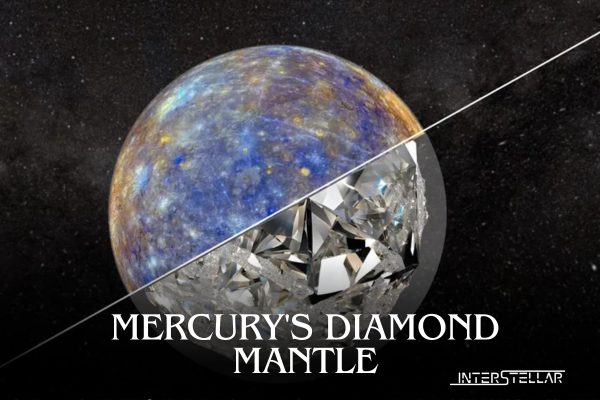Mercury’s Hidden Diamond Mantle: A New Discovery
Unveiling Mercury’s Diamond Mantle
Scientists have uncovered a stunning secret about Mercury, the smallest planet in our solar system. Data from NASA’s MESSENGER spacecraft suggest that a 10-mile-thick diamond mantle might lie beneath Mercury’s crust. This discovery sheds light on Mercury’s unique characteristics, including its dark surface and dense core.
Carbon-Rich Beginnings
Mercury has long puzzled scientists due to its unusual qualities, such as its premature volcanic end and the presence of graphite patches on its surface. These patches led scientists to hypothesise that Mercury once had a carbon-rich magma ocean. This ocean likely floated to the surface, creating graphite and giving Mercury its dark hue.
Researchers now believe that this process also formed a carbon-rich mantle beneath Mercury’s surface. Unlike previously thought, this mantle is likely composed of diamond rather than graphite.
Research and Findings
Olivier Namur, an associate professor at KU Leuven, explained that the new pressure estimates at Mercury’s mantle-core boundary support the formation of diamond over graphite. Namur’s team used data from NASA’s MESSENGER spacecraft to conduct their study. They simulated Mercury’s interior conditions on Earth, using a large-volume press to replicate the immense pressures and high temperatures found inside the planet. This allowed them to observe how minerals similar to those in Mercury’s mantle would behave.
The team discovered Mercury’s hidden diamond mantle could form through two processes. Firstly, the crystallisation of the magma ocean might have created a thin diamond layer at the core-mantle boundary. Secondly, the crystallisation of Mercury’s initially liquid core over time likely contributed to the formation of a thicker diamond layer.
Implications for Understanding Mercury
When Mercury formed around 4.5 billion years ago, its liquid core began to crystallise, enriching the remaining melt with carbon. Eventually, this led to diamond formation. Since diamond is less dense than metal, it floated to the top of the core, creating a diamond layer approximately 0.62 miles (1 km) thick.
This discovery highlights significant differences between Mercury and other rocky planets like Venus, Earth, and Mars. Mercury’s proximity to the sun meant it formed from a carbon-rich dust cloud, resulting in more carbon and less oxygen compared to other planets. This unique composition led to the formation of a diamond mantle on Mercury.
Namur hopes this finding will help solve other mysteries about Mercury, such as why its volcanic activity ceased around 3.5 billion years ago. This research provides a fresh perspective on the planet’s history and composition, contributing to our understanding of the diverse processes that shape our solar system.


